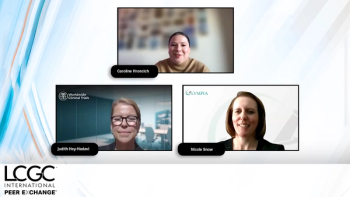
Synergistic Enhancement of Chiral Discrimination in Capillary Electrophoresis Using Deep Eutectic Solvents and Amino Acid-Based Ionic Liquids
Researchers have discovered that the combined use of deep eutectic solvents (DESs) and amino acid-based ionic liquids (AAILs) with cyclodextrin-based chiral selectors can significantly enhance the chiral separation of amphetamine derivatives.
In the realm of analytical chemistry, the separation of chiral molecules holds immense significance across industries such as pharmaceuticals, agrochemicals, and food sciences. Researchers at the University of Cyprus have made noteworthy strides in this field by exploring the potential of deep eutectic solvents (DESs) and amino acid-based ionic liquids (AAILs) to enhance the chiral discrimination ability of different chiral selectors in capillary electrophoresis.
The study, led by Constantina P. Kapnissi-Christodoulou, and published in the Journal of Chromatography A, delved into the combined application of DESs and AAILs with cyclodextrin- (CD) and cyclofructan- (CF) based chiral selectors for the separation of amphetamine derivatives (1). The objective was to determine whether this combination could augment the chiral discrimination ability of the selectors and enhance the resolution of enantiomers.
Interestingly, the results unveiled that when AAILs were combined with either CF or CD, there was only a marginal improvement in enantiomeric separation, which was deemed statistically insignificant. However, a significant breakthrough was observed when the dual system of carboxymethyl-β-cyclodextrin (CD) and DESs was employed, showcasing a pronounced enhancement in chiral separation and affirming the existence of a synergistic effect. Notably, the resolution of enantiomers of amphetamine, methamphetamine, and 3-fluorethamphetamine saw a substantial increase upon the addition of 0.5% v/v of choline chloride-ethylene glycol.
The improvements were reflected in reduced peak overlap and shorter analysis times. Specifically, the resolution of enantiomers increased from 1.4, 1.1, and 1.0 to 1.8, 1.8, and 1.5 minutes, respectively, while the analysis times rose from 19.54, 20.48, and 18.71 to 35.71, 35.78, and 32.90 minutes, respectively. However, in the CF/DES dual system, the separation of amphetamines worsened, indicating an antagonistic effect.
The study's findings demonstrate the potential of DESs as promising additives in capillary electrophoresis for improving the separation of chiral molecules, particularly when combined with CDs. This advancement holds significant implications in various fields that rely on chiral separation, such as the pharmaceutical industry's pursuit of enantiopure drugs.
Further research is warranted to elucidate the underlying mechanisms behind the observed synergistic effects and to explore the broader applicability of DESs in chiral separation techniques. As scientists continue to unravel the potential of DESs and AAILs, these innovative approaches hold promise in revolutionizing the field of chiral discrimination in capillary electrophoresis and driving advancements in diverse industries.
Reference
(1) Ioannou, K. A.; Ioannou, G. D.; Christou, A.; Stavrou, I. J.; Schmid, M. G.; Kapnissi-Christodoulou, C. P. The potential of the use of deep eutectic solvents and amino acid-based ionic liquids to enhance the chiral discrimination ability of different chiral selectors in capillary electrophoresis. J. Chromatogr. A. 2023, 1705, 464152. DOI:
Newsletter
Join the global community of analytical scientists who trust LCGC for insights on the latest techniques, trends, and expert solutions in chromatography.





